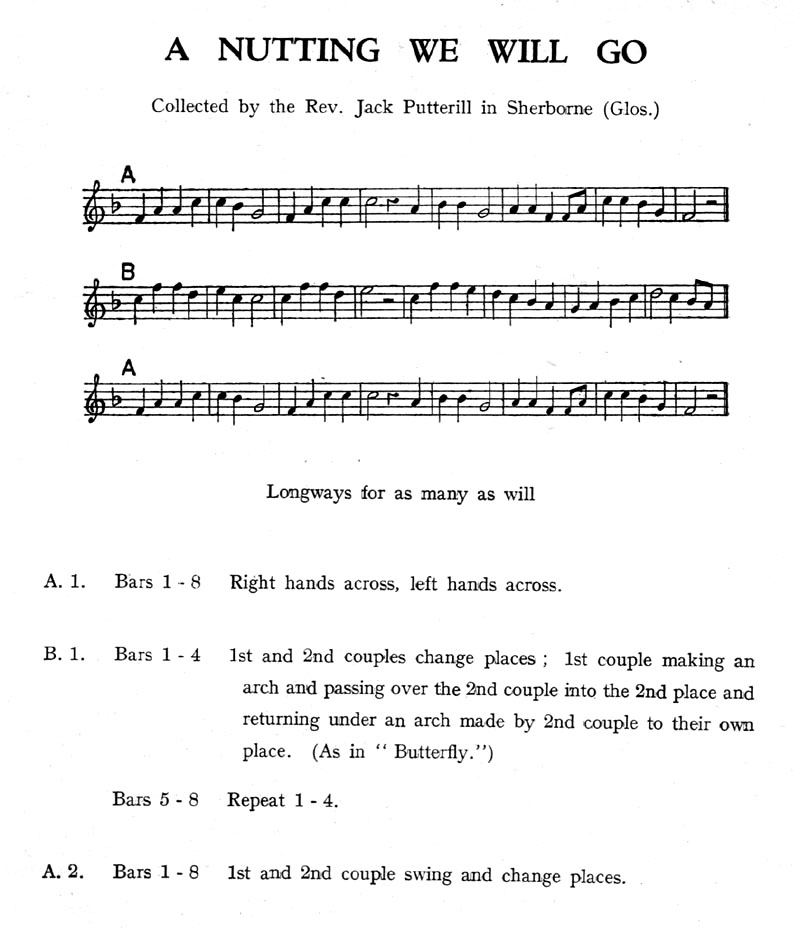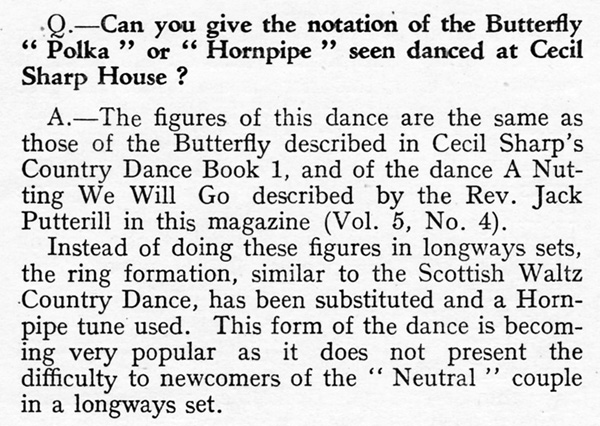Original page from English Dance & Song, April 1941

Original page from English Dance & Song, October-November 1945

Back to Dance Index
| A1 | Star Right; Star Left |
| A2 | #1s Face #2s: (#1s Arch, all walk forwards, Turn Alone; #2s Arch, all walk forwards, Turn Alone) x2 |
| B1 | Swing & Change: with your Partner Swing/Polka/Poussette/Promenade 1 & 1/2 times Anti-Clockwise around the other couple |


I'd love to hear from you if you know anything more about this dance, its composer, its style, or its history.
Feedback is very welcome on any aspect of these dances or Web pages.
Please contact John Sweeney with your comments.
